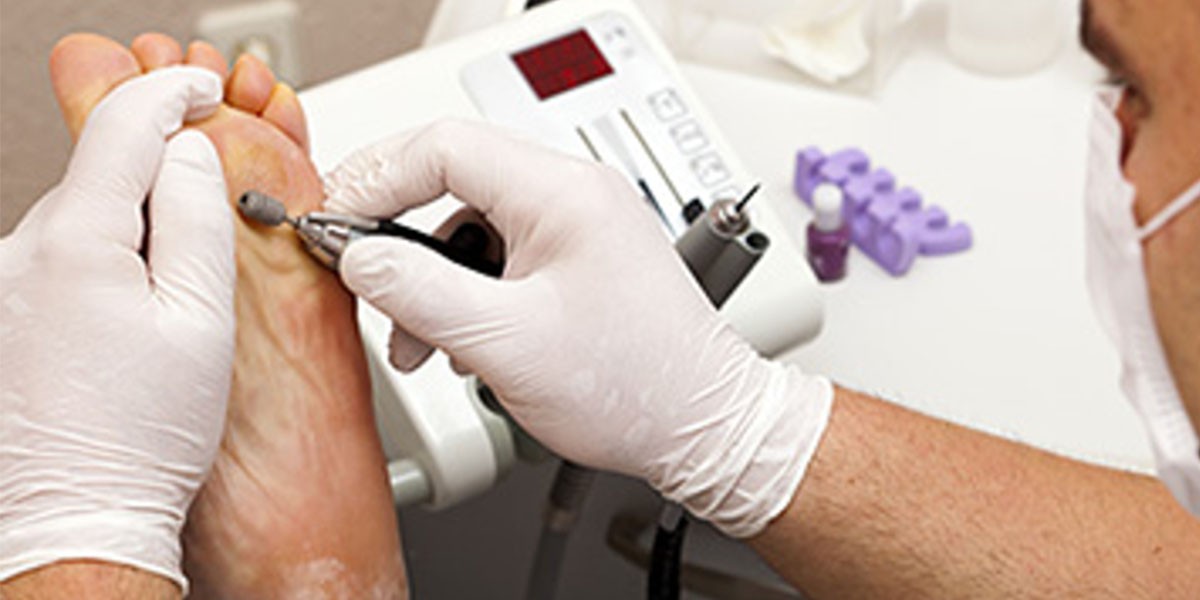Information on this page is for general guidance only. Admission and licensure requirements vary and may change; students must verify details with relevant schools or licensing bodies. Strong performance in related coursework and extracurricular experiences will help strengthen your preparation.

Podiatric physicians are devoted to the prevention, diagnosis, and treatment of foot and ankle disorders, diseases, and injuries. Podiatric physicians are the only health professionals who exclusively specialize in this area—and it’s a field in growing demand. An aging population coupled with an increase in chronic conditions that impact mobility, such as diabetes, means more people are seeking care. Podiatric students gain experience from the finest podiatric clinics, hospitals, satellite clinics, and professional office settings nationwide. With 28 bones connected by joints, tendons, muscles, and ligaments, the foot is one of the most complex parts of the body. Foot pain can significantly interfere with mobility and the activities of daily living. In addition, foot misalignments and other functional issues can cause other parts of the body to compensate, leading to problems such as knee, back, and hip pain. Podiatric surgeons perform a wide variety of outpatient and inpatient procedures that includes:
- Joint repair or replacement for problems such as bunions and hammertoes, which develop over time and often become chronically painful, especially in disorders like rheumatoid arthritis
- Removal of neuromas (painful benign nerve tumors of the foot)
- Removal and biopsy of soft tissue lesions
- Repair of ruptured or torn tendons of the foot and ankle
- Removal of heel spurs
- Use of shock wave therapy or endoscopic plantar fasciotomy to relieve heel pain
- Repair of foot fractures from sports-related injuries or accidents
- Treatment of wounds and ulcerations
Professional Associations
The (AACPM) is a nationally recognized education organization that represents the nine accredited U.S. colleges of podiatric medicine as well as over 200 hospitals and organizations that conduct graduate training in podiatric medicine. The Association serves as a national forum for the exchange of ideas, and issues information relating to podiatric medical education. For additional information please visit: https://aacpm.org/
The course of instruction leading to the DPM degree is four years in length. The first two years are devoted to classroom instruction and laboratory work in the basic medical sciences, such as anatomy, physiology, microbiology, biochemistry, pharmacology, and pathology. There is some clinical exposure in the first and second year. During the third and fourth years, students concentrate on courses in the clinical sciences, gaining experience in the college clinics, community clinics, and accredited hospitals. Clinical courses include general diagnosis (history taking, physical examination, clinical laboratory procedures, and diagnostic radiology), therapeutics (pharmacology, physical medicine, orthotics, and prosthetics), anesthesia and surgery.
AACPMAS is the application service of the American Association of Colleges of Podiatric Medicine (AACPM). Through AACPMAS, you can apply to all nine schools and colleges of podiatric medicine with one application and set of materials. AACPMAS serves only as an information clearinghouse and does not influence the podiatric medical schools’ appraisal or selection of applicants; instead, this decision is made by each school or college of podiatric medicine. Students are selected for an interview based upon the content of the application they submit through AACPMAS.
The Doctor of Podiatric Medicine (DPM) Degree
After completing the four-year curriculum required by podiatric medical schools, a new podiatric physician is required to participate in residency training. In general, states require a minimum of two years of postgraduate residency training in an approved healthcare institution. Board certified podiatric physicians are required to have two years of residency training. A residency provides an interdisciplinary experience with rotations such as anesthesiology, internal medicine, infectious disease, surgery, ER and pediatrics. Residency training provides a combination of medical and surgical experiences that are competency-based. Podiatric medical graduates select a 36-month Podiatric Medicine and Surgery Residency (PMSR) that includes training in rear foot and ankle surgery.
The nine schools and colleges of podiatric medicine offer graduate or pre-doctoral training programs in podiatric medicine. The curriculum for the Doctor of Podiatric Medicine (DPM) for the schools can be obtained by visiting the website of the schools of choice:
Pre-Requisite Courses
This is not a comprehensive list; please refer to your preferred program's website.
Successful completion of all General Education Requirements
- BIOL 1100 - Principles of Biology I
- BIOL 1200 - Principles of Biology II
- MICR 3100/BIOL 3100 - General Microbiology
- CHEM 1100 - General Chemistry I
- CHEM 1110 - General Chemistry II
- CHEM 2200 - Organic Chemistry I
- CHEM 2201 - Organic Chemistry Laboratory I
- CHEM 3200 - Organic Chemistry II
- CHEM 2211 - Organic Chemistry Laboratory II
- CHEM 4310 - Biochemistry I
- PHYS 1100 - Physics or PHYS 2100 - General Physics I: Mechanics
- PHYS 1200 - Physics or PHYS 2200 - General Physics II: Electromagnetism and Circuits
- PSY 1500 - Introductory Psychology
- SOC 2010 - Introduction to Sociology
Recommended
- MATH 2740 - Introduction to Statistics or BIOL 3000 - Biostatistics
- MATH 2040 - Applied Calculus I or MATH 2110 - Calculus I
• Entrance Exam: MCAT